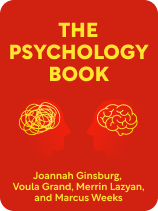

This article is an excerpt from the Shortform book guide to "The Psychology Book" by Catherine Collin, Nigel Benson, et al.. Shortform has the world's best summaries and analyses of books you should be reading.
Like this article? Sign up for a free trial here.
How has social psychology changed over the years? Why is it important to study human interaction?
The roots of social psychology begin in the 1930s when scientists became interested in studying social interactions. Because of these studies, we have a better idea of why people act in certain situations and what relationships say about humanity.
Learn more about social psychology’s history, according to The Psychology Book.
Social Psychology: Society and the Individual
The scope of psychology broadened in the 20th century, leading to the emergence of new fields like social psychology. History of this type of research begins in the 1930s, some scientists began to study how individuals behave within groups, as well as how those groups impact the individuals within them. They also looked at relationships among individuals in groups and among groups themselves. This gave them insight into how social change occurs, humans’ tendency to conform, and the psychology behind obedience, among other things. We’ll discuss some of the most prominent ideas below.
Field Theory and Social Change
The authors say that one of the earliest figures in social psychology was German-American psychologist Kurt Lewin. He developed field theory, which focuses on how a group or individual’s psychology influences a situation. He established a model of change suggesting that anyone who wants to create change in a person or group must understand the psychological and environmental factors that influence them.
For example, if a doctor’s office wanted to switch from in-office visits to remote telehealth appointments, they would need to understand many factors, including whether patients benefit from physically being in the office, whether patients and staff have the technology and knowledge needed for video visits, and whether patients can measure their own vital signs or if they need a professional to do it for them. Failing to account for any of these factors could prevent the desired change from being effectively implemented.
Lewin’s model involves three steps for effecting change:
1) Unfreezing, in which the people involved are made to understand that change is needed (which is difficult because people tend to be naturally resistant to change)
2) Changing, in which the new system is put into place (which in groups requires strong leadership and support, and in individuals requires willingness to take on a new mindset)
3) Freezing, in which the new system becomes routine
| Other Models of Change Lewin’s model has been criticized for discounting the agency of humans in the process of change, with critics saying, for example, that humans must be willing to accept the need to change and can’t be coerced into it. Since Lewis established his model, many other models have followed that do account for this human factor. Some are designed to facilitate organizational change, like John Kotter’s 8 Steps for Leading Change. Kotter’s model involves creating a feeling that change is urgently needed (similar to unfreezing), building a large group of volunteers to lead the change, getting rid of barriers to change, and establishing the change (similar to freezing). Other models are geared toward catalyzing personal change, such as Grant Van Ulbrich’s “SCARED-SO WHAT” model. This consists of two major stages, each characterized by six elements (represented by the acronyms SCARED and SO WHAT). The SCARED stage begins with surprise at the need for change and ends with a decision to either move forward or reject the change (if you decide to reject the change, you’re likely to repeat the SCARED stage until you can make a decision to move forward). The SO WHAT stage begins with a strategy for creating the change and ends with taking ownership of the change you’ve established. Both this model and Kotter’s model are much more detailed and actionable than Lewin’s model but still draw from some of the same principles of field theory. |
Conformity and Obedience
The authors note that while Lewin focused on change, other scientists like Polish-American psychologist Solomon Asch studied humans’ tendency toward conformity. He conducted an experiment called the Asch Paradigm, in which participants were placed into groups and asked to identify which of three lines on a card matched the length of a line on another card. They did a total of 18 such questions, each called a “trial.” The participants didn’t know that the other members of the group were actors instructed to give incorrect answers.
Asch found that 75% of participants conformed to the group’s incorrect answers on at least one trial but that none of them conformed on every trial. He also found that 26% of participants never conformed and always gave the right answer despite the group’s dissent, suggesting that certain people are less prone to conformity than others. Additionally, he found that if just one of the actors provided a correct answer, the actual subjects were much more likely to also provide the correct answer—this suggests that if even a small minority diverges from the group, it makes others much less likely to conform as well.

———End of Preview———
Like what you just read? Read the rest of the world's best book summary and analysis of Catherine Collin, Nigel Benson, et al.'s "The Psychology Book" at Shortform.
Here's what you'll find in our full The Psychology Book summary:
- Psychology 101 without the classrooms and dry lectures
- A look at the various fields of psychology and how they've changed
- Context, criticisms, and limitations of certain theories






